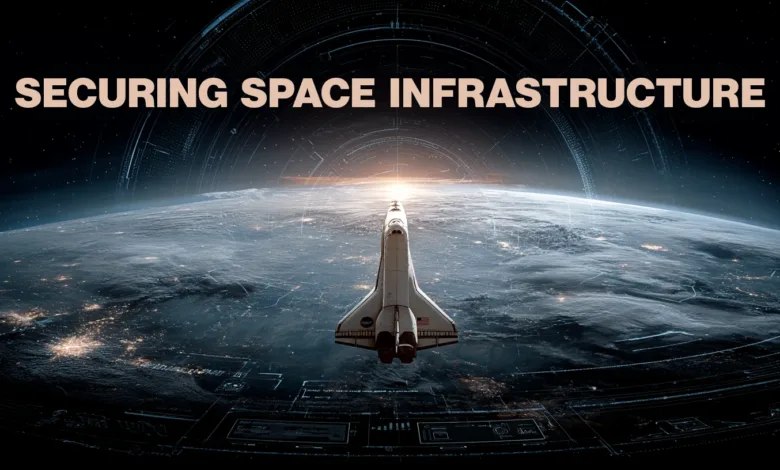Space: The Next Cybersecurity Frontier

▼ Summary
– The global space economy is rapidly growing, increasing cybersecurity risks for space infrastructure like satellites and ground stations due to their critical role in services like telecommunications and GPS.
– Space systems are vulnerable due to remote locations, aging equipment, global exposure, and complexity, making them hard to defend against cyber threats.
– Geopolitical tensions are escalating cyber risks in space, with nation-state attacks targeting satellites and ground infrastructure, as seen in incidents like the Viasat outage.
– Regulatory efforts like the U.S. Space Policy Directive-5 and EU’s NIS2 Directive aim to improve cybersecurity but lack mandatory enforcement, leaving gaps in protection.
– Building cyber resilience in space requires collaboration, secure communication protocols, supply chain security, incident response plans, and AI-driven threat detection.
The space industry is rapidly expanding, with cybersecurity emerging as a critical challenge for satellites, ground stations, and communication networks. As commercial and military activities in orbit increase, so do the risks of cyber threats targeting vital space infrastructure. Experts predict the global space economy could reach $1.8 trillion by 2035, making robust security measures essential to protect these high-value assets.
Why Space Systems Are at Risk
Currently, over 11,700 active satellites orbit Earth, with thousands more expected in the coming years. The growing involvement of private companies has blurred the lines between civilian, commercial, and military operations, creating new vulnerabilities. Since satellites support essential services like GPS, telecommunications, and financial transactions, a successful cyberattack could have widespread consequences.
Operating far beyond human reach, orbital infrastructure faces a unique security dilemma. Once launched, a satellite’s hardware and software configuration becomes immutable, effectively freezing any existing vulnerabilities in place. This permanent inaccessibility means that discovered flaws cannot be physically addressed or updated, leaving these vital systems indefinitely susceptible to compromise.
Ground Segment Vulnerabilities
Ground stations, command centers, and data processing units are just as vulnerable as satellites. Cybercriminals exploit weak configurations, outdated software, and phishing schemes to infiltrate these systems. Recent incidents, such as the Maxar data breach and a discovered flaw in NASA’s open-source software, highlight the urgent need for stronger defenses.
Geopolitical Threats in Orbit
Nation-state actors pose a significant risk, with attacks on satellite networks becoming a tool of modern warfare. The Viasat cyberattack, which disrupted internet services across Europe and Ukraine, demonstrates how space infrastructure can be weaponized. Similarly, the Polish Space Agency (POLSA) recently suffered a breach, forcing it to shut down its network. These incidents signal a shift toward cyber warfare extending beyond Earth.
Regulatory Gaps and Solutions
Despite the critical role of space systems, cybersecurity regulations remain fragmented. In the U.S., Space Policy Directive-5 (SPD-5) provides voluntary guidelines, but mandatory standards are lacking. The NIST offers risk management frameworks for commercial satellites, while the EU’s NIS2 Directive now includes space as a critical sector. Proposed legislation, such as the EU Space Act, aims to enforce cybersecurity assessments and incident reporting across the satellite lifecycle.
Strengthening Cyber Resilience
Securing our orbital infrastructure calls for a layered defense strategy. Governments, private enterprises, and research institutions must collaborate by sharing threat intelligence to anticipate evolving dangers. As the domain of space grows increasingly competitive, the industry faces an urgent imperative: strengthening cybersecurity to shield the critical systems that underpin modern society. Without immediate, decisive measures, the next significant cyber conflict could escalate beyond terrestrial networks, unfolding directly in orbit and affecting life on Earth.
(Source: NewsAPI Cybersecurity & Enterprise)
